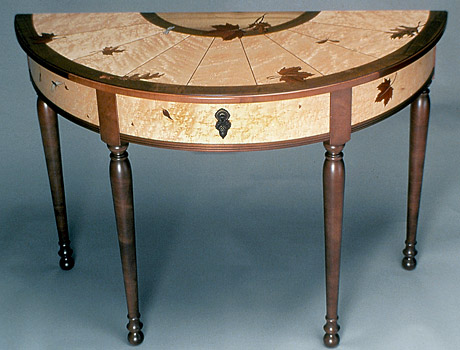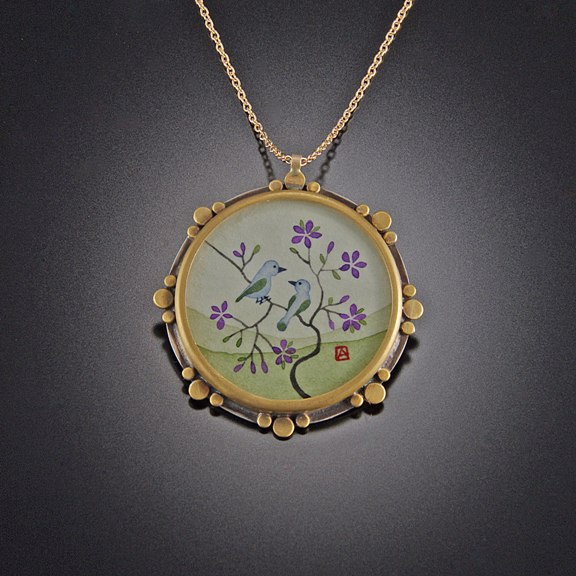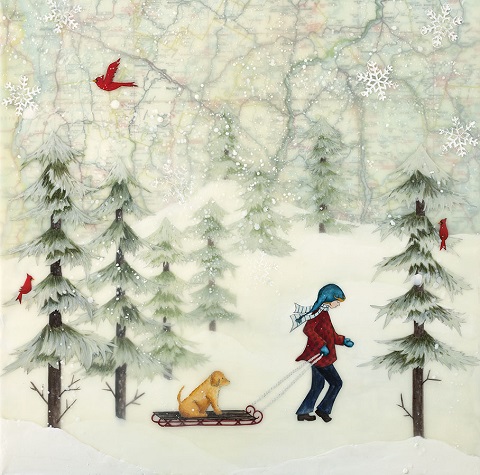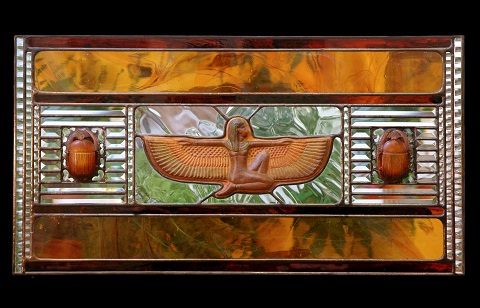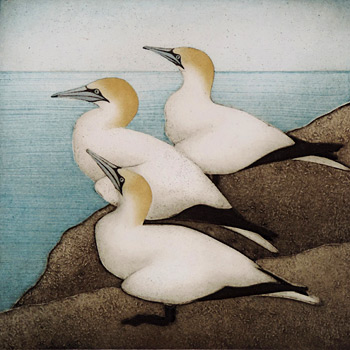What’s Cooking? Animal Dreams!
Our relationship with animals is complex, based on necessity, fear, love and awe. We have hunted animals for food and used them for agriculture and transportation. We have worshipped them and welcomed them into our homes as companions. Ever since the first artists were inspired to draw on cave walls, we have made images of them.
Humankind’s visual history is full of animals. Sculptures of cats were found in the tombs of ancient Egypt, paintings of horses were hung next to portraits of kings and queens, birds decorated Greek vases and lions’ claws were carved into the feet of Chippendale furniture. Mythical beasts decorated medieval manuscripts, and dogs were commonly painted into Renaissance wedding portraits as symbols of marriage.
Paradise City’s artists bring their animal dreams into 21st Century art and design. Using the materials at their fingertips – clay, glass, wood, metal, oil paints, cameras, printing presses, fiber, gemstones, found objects and more – they delight us with their interpretations of wild and domesticated creatures, birds, insects, fish and reptiles.
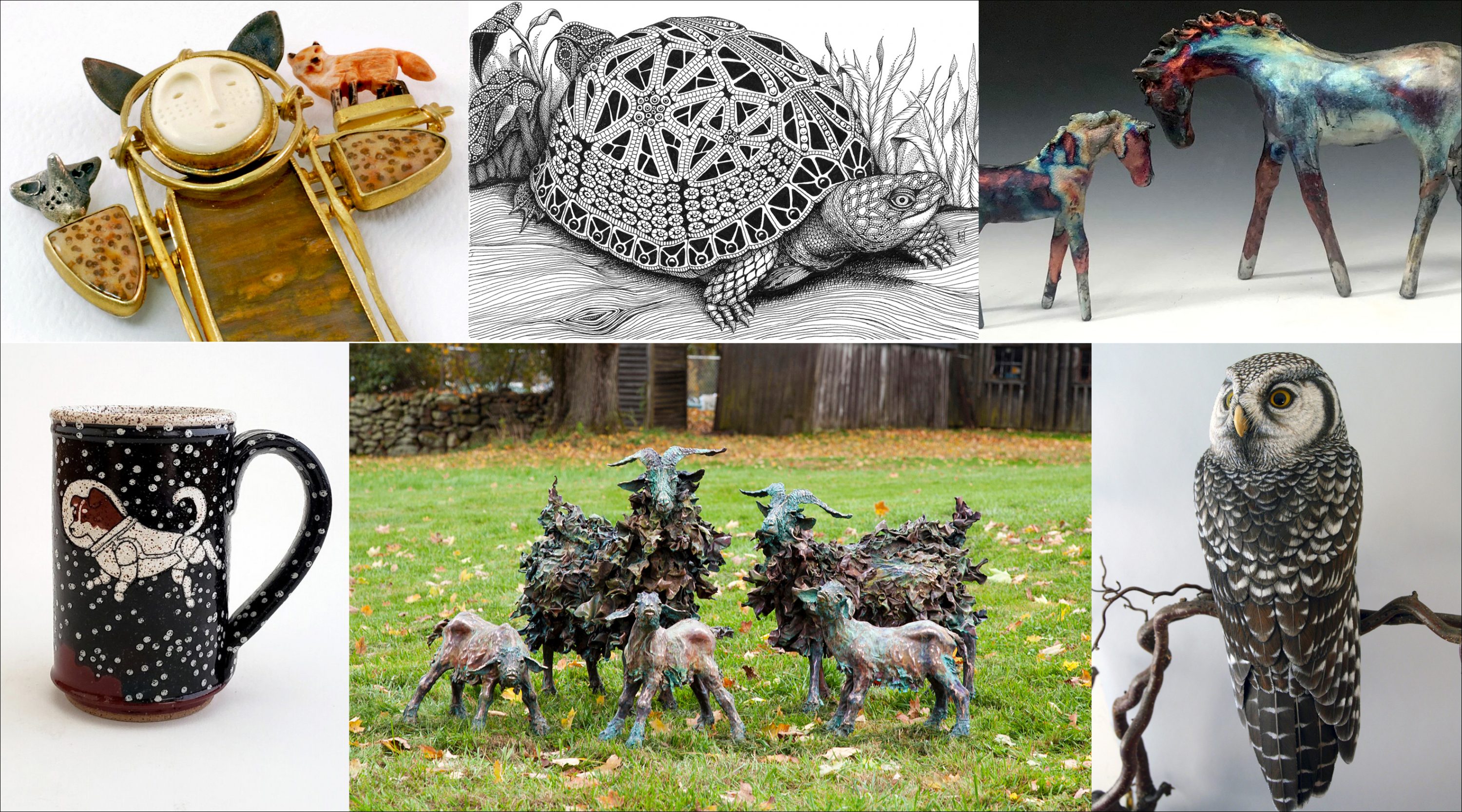
For many artists, wildlife offers rich artistic opportunities, like capturing the intricate beauty of feathers, fur, scales or leathery hides. Ira Frost is a bird lover, and his fascination and unique understanding of the avian world are perfectly reflected in his incredibly life-like bird carvings. Bronze, in Roger DiTarando’s expert hands, is transformed into actual-sized goats, woolly sheep, feathered herons and sleek otters. Artistic license is evident in Kristin Moger’s detailed ink drawings, combining realistic depictions of animals with elaborate decorative patterns. Carolyn Morris Bach’s foxes, birds and bears become spirit companions in her award-winning brooches, necklaces and earrings. Lindsey Epstein is a horse aficionado, and her raku-fired equine sculptures are among her favorite studio projects. And Ian Buchbinder has developed a whole line of astronaut animals that float on plates and mugs in starry skies.
What else is cooking at Paradise City? It’s clam season. This delicious recipe for Uncommon Clam Chowder is creamy and elegant, with a double dose of clams.
Featured Artists
This Week’s Recipe
New England is known for its “chowdah”. There are numerous versions, but we have always loved traditional creamy “white” clam chowder. This particular recipe is from one of our New Year’s Eve dinner party menus. It’s a smoother soup, filled with the sweetness of leeks and the smokiness of pancetta, and the whole littlenecks on top lend it a note of sophistication.
Uncommon Clam Chowder
Serves 4:
1 tbsp butter
¼ cup pancetta, minced
1 clove garlic
2 leeks, white and pale green parts only, sliced thinly (about 2 cups)
¾ pound starchy potatoes, peeled and diced into 1” cubes
3 cups chicken broth or stock
1 cup bottled clam broth
¼ cup heavy cream
1 cup chopped clams
Salt and pepper to taste
12 littleneck clams, steamed or roasted until they open
Chives, finely chopped, for garnish
1 cup ¼” diced cooked potatoes (optional)

- Melt the butter in a pot over medium heat. Add pancetta, garlic and leek and sauté until the vegetables are soft, about 7 or 8 minutes.
- Add 1” cubed potatoes and the broths, cover, and simmer for about 25 minutes. The potatoes should be soft to the point of falling apart.
- Turn off the heat. With a stick blender, puree until just smooth. Do not over puree. Season to taste with salt and pepper, then stir in the cream. If it seems too thick, add a little milk or water. Add the chopped clams (and the cooked quarter-inch diced potatoes, if you want a bit more texture). It can be prepared a day ahead up to this point.
- Reheat gently. Serve in wide soup bowls topped with the whole clams in their shells. Sprinkle with chives.



